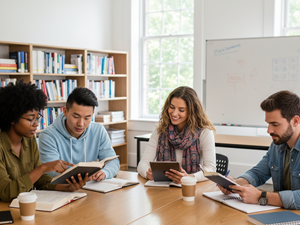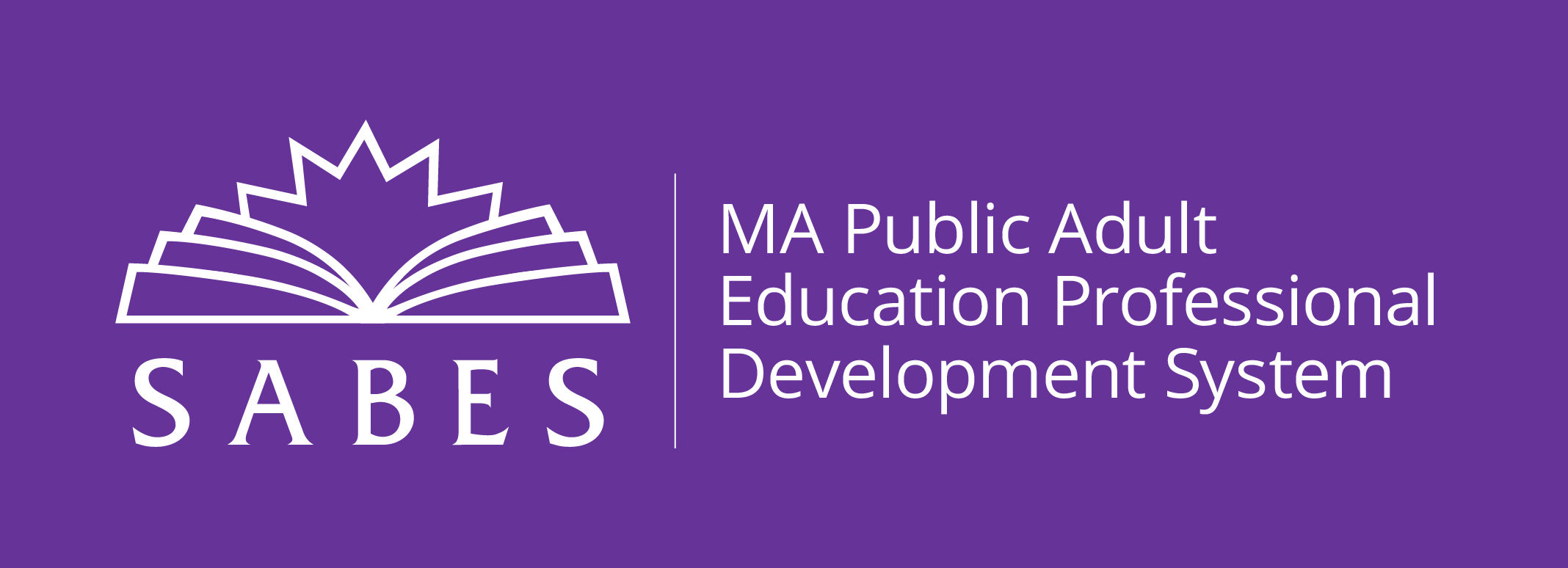
In English Language Arts (ELA) classes for adults, student-to-student learning is a powerful tool. This is especially true when included in contextualized reading and writing instruction. Adults come to class with a wealth of knowledge and life experiences. They can use this experience to share what they know, make connections to a text or topic, and offer unique perspectives.
Jonathan McDonnell, Director of Vocational Education at the Bristol County Sheriff’s Office, sums up the benefits of student-to-student learning:
“I try to communicate that everyone is unique, and everyone has something to offer, whether it is how to use a semicolon or how to encourage someone. Having peers supporting learning makes our classes work as a team. Once we are committed to our shared goals, we all work together and rely on each other to achieve them.”
Read on for reading and writing strategies you can use to help your students learn from each other.
Reading Strategies
Sharing Background Knowledge
Peer learning strategies can boost reading comprehension by fostering active engagement and collaborative knowledge building. Encourage students to share what they already know and have experienced about a reading topic. Linda Lewis Hennessy M.Ed., in her book The Reading Comprehension Blueprint, writes about the critical role that background knowledge plays in understanding text (p. 161). When reading a new text, peer learning enables students to share what they know. This activates their own background knowledge, and helps other students connect with the text as well.
“We always remind students that they bring knowledge and experience to the classroom, and by sharing they can support each other, as we all have different experiences, strengths, and challenges.”
—Ana Roche-Freeman, RLA and Social Studies High School Equivalency Teacher, Lawrence Adult Learning Center, Lawrence Public Schools
K-W-L graphic organizers (where students write what they Know, what they Want to know, and what they Learned) used in pairs or small groups are good for this. They help students think about what they already know and what they want to find out before reading. After reading, students add what they learned.
While teachers play a key role in building students’ background knowledge before, during, and after reading, letting students share what they know is a great way to help them connect with the text and build the background knowledge of their peers.
Jigsaw Readings
Jigsaw readings make texts easier for students to absorb, and are a great way for students to showcase their learning. First, divide a longer, relevant text, such as an article on current events, a job application, or a historical document, into smaller sections. Then, assign each part to a small group to read. Each group’s goal is to become "experts" on their part. After a set period of time, each group meets with students from other groups and teaches their portion of the text. This promotes active reading, summarizing, and clear communication.
Cultural Connections to a Topic
Hennessy writes that "asking students to talk about or give an example based on their experience in their home country" can help them "make connections" that enhance their comprehension (page 163). This could be especially helpful for English learners. For example, consider asking students to talk about the history of their home country's government. Their country’s history may help them to understand a discussion or reading about the Revolutionary War in the United States. This, in turn, may help them understand how the U.S. democratic government started.
Writing Strategies
Student-to-student learning is also effective in contextualized writing instruction. Students can learn to develop their skills by writing for a specific purpose or audience. Here are two strategies.
Peer Response Workshops
Reviewing classmates’ papers can help students learn more about their peers and strengthen their critical reading and communication skills. To do so:
- Assign a writing task to students. This could be a persuasive letter, a resume, or a paragraph about a community issue.
Provide students with clear rubrics or guiding questions. These tools will help them focus on what's important for the writing task. - Once a first draft is complete, give suggestions on how to provide helpful feedback.
- Ask students to trade papers.
- Using their rubrics and guiding questions, students review their classmates’ papers. For example, students may consider questions such as:
- Is the main point of this letter clear to the reader?
- Does the resume show important skills well?
- Are the ideas in the argument well-supported by proof?
- Students give feedback to each other.
Team Planning and Brainstorming
Team planning can help prevent writer's block and create a richer pool of ideas. Before starting a writing task, have small groups brainstorm ideas. For example, if students are writing a plan for a community project, groups can think of ideas for the project, who they are writing for, and the main points they want to make.
Summary
Include peer learning in your ELA instruction by encouraging students to share their rich knowledge, experiences, and ideas. When working and learning together, adult students feel connected and supported. When they share what they know, the whole class benefits and grows as a community.


